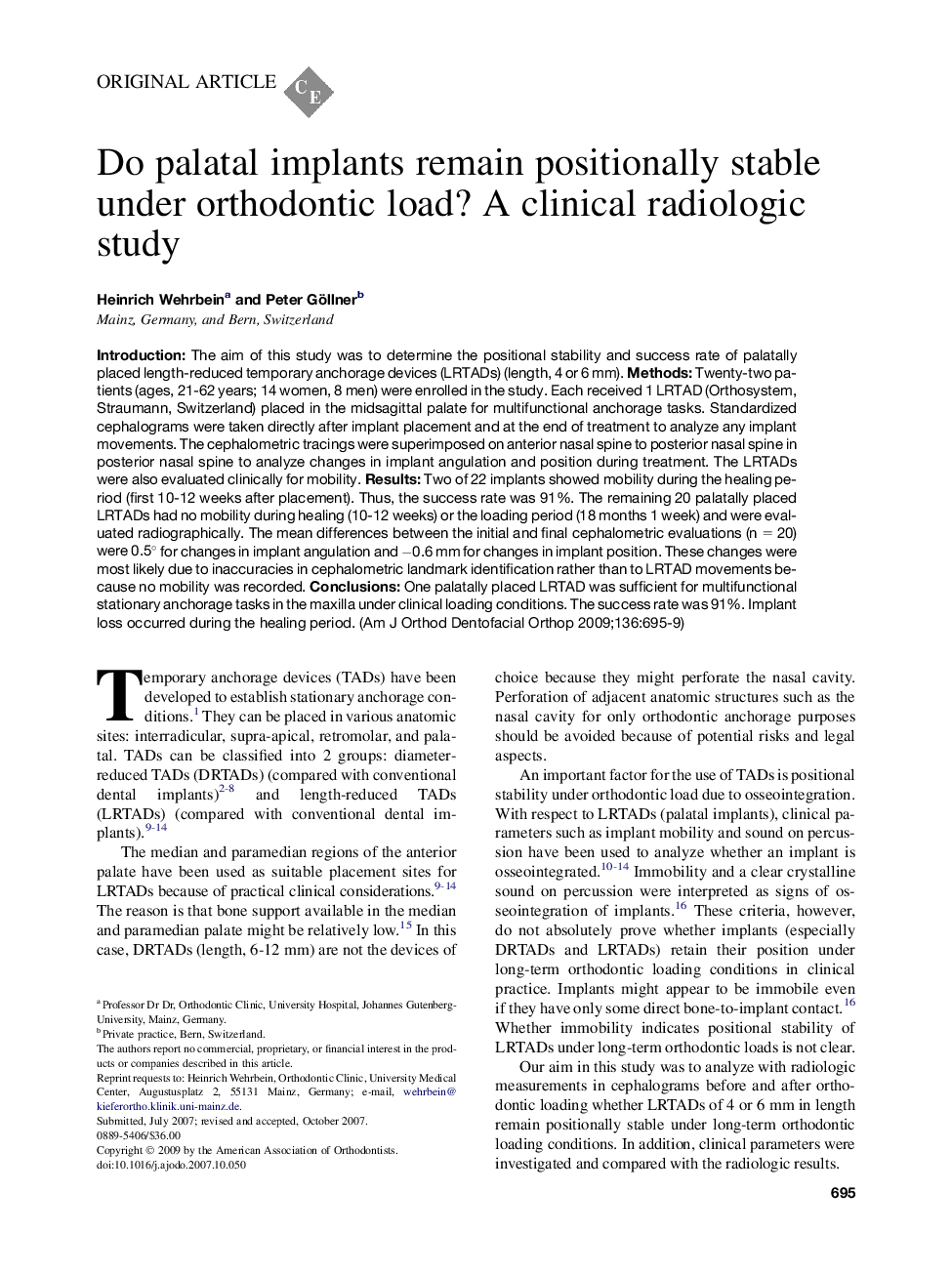| Article ID | Journal | Published Year | Pages | File Type |
|---|---|---|---|---|
| 3118049 | American Journal of Orthodontics and Dentofacial Orthopedics | 2009 | 5 Pages |
IntroductionThe aim of this study was to determine the positional stability and success rate of palatally placed length-reduced temporary anchorage devices (LRTADs) (length, 4 or 6 mm).MethodsTwenty-two patients (ages, 21-62 years; 14 women, 8 men) were enrolled in the study. Each received 1 LRTAD (Orthosystem, Straumann, Switzerland) placed in the midsagittal palate for multifunctional anchorage tasks. Standardized cephalograms were taken directly after implant placement and at the end of treatment to analyze any implant movements. The cephalometric tracings were superimposed on anterior nasal spine to posterior nasal spine in posterior nasal spine to analyze changes in implant angulation and position during treatment. The LRTADs were also evaluated clinically for mobility.ResultsTwo of 22 implants showed mobility during the healing period (first 10-12 weeks after placement). Thus, the success rate was 91%. The remaining 20 palatally placed LRTADs had no mobility during healing (10-12 weeks) or the loading period (18 months 1 week) and were evaluated radiographically. The mean differences between the initial and final cephalometric evaluations (n = 20) were 0.5° for changes in implant angulation and −0.6 mm for changes in implant position. These changes were most likely due to inaccuracies in cephalometric landmark identification rather than to LRTAD movements because no mobility was recorded.ConclusionsOne palatally placed LRTAD was sufficient for multifunctional stationary anchorage tasks in the maxilla under clinical loading conditions. The success rate was 91%. Implant loss occurred during the healing period.
